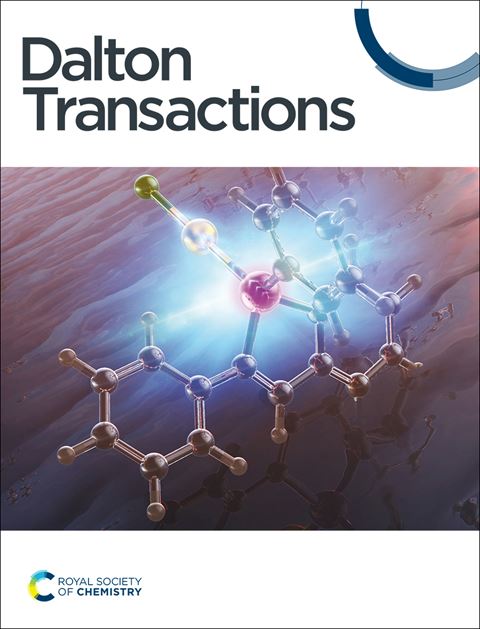第二配位球官能团扩展对联吡啶锰CO2还原电催化剂产物选择性的影响
IF 3.5
3区 化学
Q2 CHEMISTRY, INORGANIC & NUCLEAR
引用次数: 0
摘要
利用已建立的联吡啶锰类均相电催化剂,研究了四种新型配体,探讨了远端配位球、外配位球、氢键和位阻效应对质子偶联电催化CO2还原产物选择性的影响。在第二配位球中存在一个简单的醋酸官能团,无论质子源(H2O vs. PhOH)或应用电位如何,都为co2到co的转化提供了高选择性。偶联吡啶6,6′位上的邻甲氧基苯甲酸二/外配位球导致产物选择性差。相反,当乙酸官能团与n - boc -丙氨酸接合时,在高过电位催化波下(对于H2O和PhOH酸),CO: HCO2−产物选择性为~ 1:1。活化参数的计算焓和自由能表明,在氢化锰过渡态选择性地插入二氧化碳比质子化更有利,这与控制电位电解研究中可以忽略不计的产氢一致。本文章由计算机程序翻译,如有差异,请以英文原文为准。

The impact of second coordination sphere functional group extension on product selectivity for manganese bipyridyl CO2 reduction electrocatalysts
Utilizing the well established manganese bipyridyl class of homogeneous electrocatalyst, four new ligands are studied to probe the influence of distal, outer coordination sphere, H-bonding and steric effects on product selectivity for proton-coupled electrocatalytic CO2 reduction. The presence of a simple acetate functional group in the second coordination sphere provides a high selectivy for CO2-to-CO conversion irrespective of proton source (H2O vs. PhOH) or applied potential. The o-(methoxybenzoate)phenyl second/outer coordination sphere at the bipyridyl 6,6′-positions imparts poor product selectivity. In contrast, upon conjugation of the acetate functional group with the N-Boc-alanine moiety, a CO : HCO2− product selectivity of ∼1 : 1 is observed at the high overpotential catalytic wave (for both H2O and PhOH acids). Computed enthalpy and free energy of activation parameters suggest that selective CO2 insertion at the manganese hydride transition state is favored, over protonation, consistent with negligible hydrogen production during controlled potential electrolysis studies.
求助全文
通过发布文献求助,成功后即可免费获取论文全文。
去求助
来源期刊

Dalton Transactions
化学-无机化学与核化学
CiteScore
6.60
自引率
7.50%
发文量
1832
审稿时长
1.5 months
期刊介绍:
Dalton Transactions is a journal for all areas of inorganic chemistry, which encompasses the organometallic, bioinorganic and materials chemistry of the elements, with applications including synthesis, catalysis, energy conversion/storage, electrical devices and medicine. Dalton Transactions welcomes high-quality, original submissions in all of these areas and more, where the advancement of knowledge in inorganic chemistry is significant.
 求助内容:
求助内容: 应助结果提醒方式:
应助结果提醒方式:


